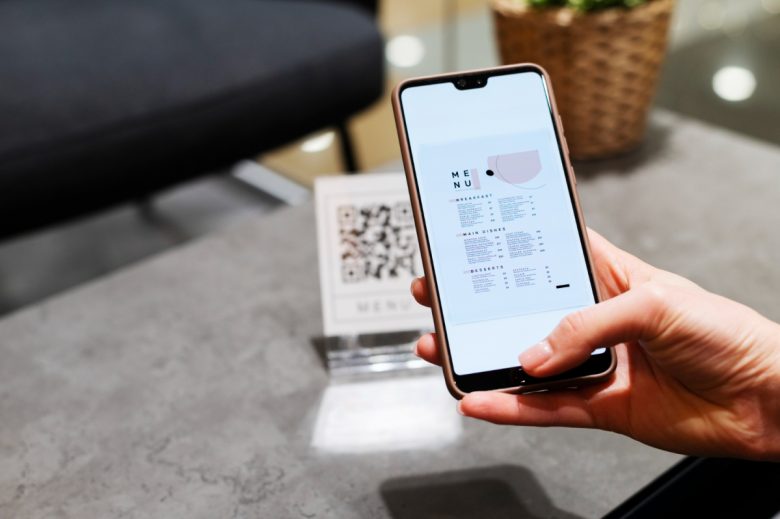As social media continues to grow, brands are increasingly converting to mobile marketing. You might consider this to be a stellar strategy for your business! The benefits of marketing your brand through a medium that reaches thousands, if not millions, of people are manifold. Mobile marketing, like any type of marketing, promotes a range of products, services, eBooks, and courses to a target group of individuals who use mobile devices.
What differentiates mobile marketing from traditional marketing? Well, many things. However, the main aim of mobile marketing is to organically reach a target audience. Now, more than ever, customers are using their phones to make online purchases, be it for convenience or access to a broader range of items.
Using our mobile devices is becoming an everyday necessity. Mobile marketing has become a part of our daily lives, whether we notice it or not. Some of the primary mobile marketing strategies include content marketing or social media marketing, emails, in-app advertisements, SMS messages, and location-based and proximity marketing. These strategies are organized under four categories: price, place, product, and promotion.
Higher Conversion Rates
The ultimate mobile marketing goal is to drive sales. It’s evident how effective mobile marketing strategies can be in boosting sales. The click-through rates (CTR) on mobile devices exceed those on laptops or other devices. Higher conversion rates indicate the number of individuals becoming customers based on the quality of the marketing you provide. This conversion is achieved when the business’s goals align with those of the consumer.
The goal is to create content that fosters a relationship with the individuals showing interest. This engagement encourages conversion of the individual into a repeat customer. Trust is gained through reviews, videos, social media content, email campaigns, and blog posts, making customers more willing to purchase a product they understand fully.
Cost-Effectiveness
Marketing your business online is surprisingly affordable. Compared to other marketing strategies, this is the most cost-effective option. There is a broad range of communication channels to choose from. For instance, social media advertising may cost between $15-$200 per day, adding up to $450-$6,000 per month. The budget may vary depending on the chosen mobile marketing strategy, but this could save you time and money in the long run.
A significant number of potential customers are now likely to be on their devices, especially their phones. This affordable marketing strategy is an excellent way to target audiences via smartphones and other mobile devices, creating a personal connection for less than the cost of TV ads and billboards.
Personalization
If the messaging and branding are personalized for the customer, engagement rates are typically higher. It’s much easier to personalize marketing through mobile devices than through TV or print. Each individual has different goals when purchasing an item online.
Personalization is another benefit leading to increased sales while targeting individuals who check their devices roughly every 10 minutes daily. On average, Americans check their phones around 96 times per day. Another statistic shows that Americans check their phones about 352 times per day . That’s approximately 90-300 possible opportunities to make a sale for a single customer!
Real-Time Delivery
As our lives become busier—with summer vacation planning and maintaining a work-life balance—our time may feel limited. During the mobile age, it’s easier and faster to use services like UberEATS for lunch. UberEATS uses an effective strategy I’ve personally noticed—SMS messages. These messages may offer discounts, inform customers about the day’s menu, or remind them that the app is on their mobile device.
With just a few simple clicks, your meal arrives at your doorstep. This is an example of how swift online transactions can be. A staggering statistic reveals that around 90% of mobile users open their messages within the first 30 minutes of receiving a text message.
Enhanced Analytics
Google is one of the world’s largest search engines. We can learn a lot about customer behavior based on your key phrases and wording. AI is improving every day. The amount of data needed to generate Google’s analytics is mind-boggling! Digital analysts still don’t fully understand how Google’s algorithm works.
Every interest, click, and search is categorized and tailored to match your inquiry, whether it’s to learn something new, make the right purchase, or find the best pizza places in town. The end goal is either a purchase or knowledge gained. The content through mobile marketing should align with the user’s intent for that search.
So, what are mobile marketing analytics? They are a collection of learned techniques like predictive modeling and machine optimization used within businesses to enhance marketing strategies and decision-making. There are four strategies: A/B testing, segmentation, personalization, and predictive analytics.
Where does Google Analytics fit into the picture with mobile marketing? Let’s delve into that. Google can indeed track your mobile apps! Install tracking is when data from your mobile apps is stored in your analytics account, generating a report in your Mobile app sources. This can help determine which marketing campaigns are the most engaging for users. Google Analytics can also track social media channels, apps, email campaigns, and websites. Mobile marketing and Google Analytics can work hand-in-hand to determine the effectiveness of different marketing campaigns in creating more revenue and engagement.
Ubiquity
The vastness of the internet is as intriguing as the cosmos. The ubiquitous nature of mobile marketing means it can be everywhere at once. As much as mobile marketing is used online, it’s also used offline, effectively through SMS messages. If you start to notice now, your mobile apps are using this SMS messaging strategy more frequently to bring you back to the mobile app.
One mobile marketing strategy that truly stands out is location-based marketing, also known as geofencing. This technique uses the mobile device to push a notification or alert, encouraging the potential customer to take an offer or visit a nearby Starbucks. Mobile marketing’s omnipresence makes it highly effective at driving conversions and overall sales, no matter where you are.
Integration with Other Marketing Channels
Like an interwoven web, mobile marketing has various avenues to keep their target audience engaged with their apps, social media, or reading through the many emails we receive daily! Emails are the hook of marketing sales. This is due to the personalization of the potential customer you are targeting. For example, let’s say you have an e-commerce store, and on your site, you have a pop-up offer: “20% off your first order,” encouraging customers to provide their first name and email.
Within a few seconds, they will receive the first email in a sequence, welcoming them and providing the discount for their first order. Fast forward a few months and multiple email sequences later, you’ve made a few sales and have gained a repeat customer. Each email includes links to social media accounts promoting your e-commerce store. The engaged customer then follows your accounts to see new products, the process of creating the products, and personal insights into the individual running the store.
Conclusion
Mobile marketing is only going to keep evolving and growing. These rapid transactions are the start of something much more significant! The needs of customers are changing, as is the delivery of products and services. Now more than ever, we see how important connection is to the consumer. Building a relationship with the mobile user is essential to making sales. Mobile marketing is beneficial in growing your brand while creating a trusted bond with your customers, both online and offline.
Also read:
Mobile Marketing vs Digital Marketing: Understanding the Difference Between the Two
Advantages and Disadvantages of Mobile Marketing
8 Mobile Marketing Trends to Follow












Pingback: 7 Key Advantages of Mobile Marketing – Entrepreneur – Start, Run and Grow Your Business
Pingback: 7 Key Advantages of Mobile Marketing | Entrepreneur Canada
Pingback: 7 Key Advantages of Mobile Marketing – Austin Rotter
Pingback: 7 Key Advantages of Mobile Marketing – Andrea Zanon
Pingback: 7 Key Advantages of Mobile Marketing – Joseph Odierno Buffalo